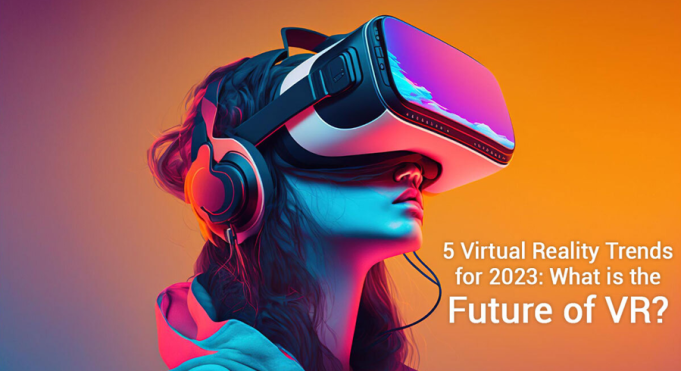VR (virtual reality) is a cutting-edge technology that allows people to interact with a computer-generated environment. This environment simulates an imagined or real world. Users wear VR headsets on their heads, and images are displayed, creating illusions of being part of an immersive virtual world.
Although technology has been around for decades, it has only recently started to become mainstream. Also, virtual reality has gone beyond entertainment and gaming. Today, technology is being leveraged across industries, including tourism, entertainment, healthcare, and education.
In recent years, VR headsets have become more accessible and affordable. The quality of VR experiences has dramatically improved, and as a result, it is poised to become one of the major players in the tech industry in the coming years.
The future of virtual reality is full of possibilities, and this article talks of the major virtual reality trends for this year and beyond.
The exponential rise of standalone VR headsets
One of the significant trends in VR is the rise of standalone VR headsets, which do not need a smartphone or computer to work. Hence, they’re much more accessible and portable than their previous counterparts.
VR headsets have also become an integral part of the Mac user experience. Up until macOS High Sierra, virtual reality was a non-existent reality. But Apple has improved and made their Macs technologically equipped to support VR. So, you will find the best VR headset for Mac, such as the HTC Vive, to work with your system. This headset is also compatible with Steam and takes the gaming experience to the next level.
Coming back to standalone VR headsets, the Pico Neo 3 and Oculus Quest 2 are already popular. They are expected to grow in popularity in 2023. These headsets are the perfect option for users wanting to experience virtual reality without connecting to their smartphone or computer.
Adoption of VR by businesses
Virtual reality is already being used by businesses in several ways, such as collaboration, training, and marketing. You can expect businesses to adopt VR in the future on a large scale as the technology becomes affordable.
VR in business is poised to be used as a robust tool to train employees on new procedures, create immersive marketing experiences and collaborate with remote colleagues.
Besides staff training and marketing, the technology will also be used to streamline and improve customers’ experiences and offer them accurate materials for product reviews.
The arrival of the Metaverse
The Metaverse is a hypothesized iteration of the Internet as a universal, single, and immersive virtual world facilitated by VR and AR headsets.
Metaverse is in its early stages, but it has the potential to revolutionize the way people interact with the Internet. Although it is still a concept, it has the potential to be a disruptive technology. The Metaverse may allow you to play, work and socialize in a new way. It might even create new opportunities for developers and businesses.
VR in education
Transformation in education stands as one of the most prominent VR trends. The latest virtual reality technology shatters traditional learning boundaries as classrooms are transported to different epochs.
VR in education fosters better comprehension and more engagement. There’s also the possibility of performing surgical procedures risk-free, and this is a massive leap in medical training.
The future of VR points toward reshaping the entire approach to training and education.
Social VR platforms
As a business or an individual, engaging with social virtual reality platforms might open up a new world of opportunities. These platforms are poised to offer unique ways to network, interact and collaborate in the virtual space.
The future of VR is in building communities, hosting virtual meetings, and attending virtual events. These platforms are evolving and becoming more inclusive and user-friendly.
The Bottom Line
These are a few of the trends that are poised to shape the future of VR in 2023 and beyond. As virtual reality technology continues to evolve, you can expect to see more innovative and exciting VR experiences in the years to come. Also, the technology is expected to become much more affordable and accessible in the coming years.
Additionally, there are several other factors that might be shaping the future of VR. These factors include the growth of the VR content market, the development of new VR hardware, and the increasing adoption of VR by businesses and consumers.
It can be said that the future of virtual reality is extremely bright. You can look forward to seeing more VR experiences in the years to come. These experiences could change the way you interact, work, play, learn, and shop. Businesses that do not have VR as part of their long-term strategy might find themselves at a disadvantage.










